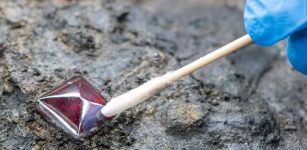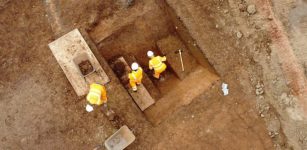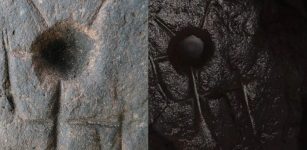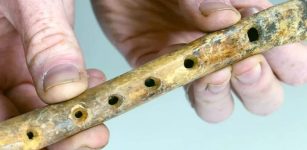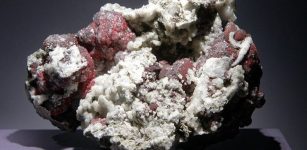Unique Gold Votive Plaque Found At Fort Apsaros Reveals Evidence Of A Mysterious Roman Sect
Jan Bartek - AncientPages.com - Archaeologists at the Roman fort of Apsaros in Georgia have uncovered a significant find: a unique gold votive plaque dedicated to Jupiter Dolichenus, confirming the presence of this deity's cult, which was favored by Roman soldiers. Fort Apsaros, known in ancient times and constructed around 2,000 years ago on the border of the Roman province of Cappadocia, is now located in Gonio near Batumi, a popular holiday destination in western Georgia.
Apsaros, owing to its strategic location, was a crucial component in the defense system of the eastern frontiers of the Roman Empire. Presently, it is a picturesque ruin, with only the late Roman and Byzantine fortifications remaining well-preserved. The interior largely consists of empty space, where one can see the outlines of old building foundations scattered throughout. Historically, a sea route from Colchis (modern-day western Georgia) to the Roman provinces in Asia Minor passed near this fortress.
Since 2014, a Polish-Georgian archaeological team has been excavating this site. The latest excavation season was led by Dr. Radoslaw Karasiewicz-Szczypiorski from the University of Warsaw's Polish Centre of Mediterranean Archaeology and Dr. Lasha Aslanishvili from Ajara's Cultural Heritage Preservation Agency.
Fragments of mosaic secured on site. Credit: Radosław Karasiewicz-Szczypiorski
This year marked their first discovery of a gold votive plaque—a small and thin plate that fits into one's palm—featuring embossed decorations and an inscription in Greek dedicated to Jupiter Dolichenus.
'It confirms the existence of a place of worship, a temple dedicated to Jupiter Dolichenus in the immediate vicinity of the find. This deity is different from Jupiter Capitolinus, the official Roman deity. The roots of the cult of Jupiter Dolichenus reach the east, the border of modern Syria and Turkey. It was a local deity, which, for not fully clear reasons, became popular in the Roman military environment', says Dr. Radosław Karasiewicz-Szczypiorski in a press release.
He highlights that discovering a nearly intact gold object from ancient times is an extraordinary occurrence. Such finds are uncommon at this site, possibly because the military did not typically wear gold, which was scarce in everyday use. However, this does not imply that the garrison or its officers lacked financial reserves in gold, according to the archaeologist. Gonio is renowned for a treasure trove of gold objects unearthed in the 1970s. This discovery is indirectly linked to the garrison and suggests that officers or those managing the garrison's finances might have buried chests of gold under special circumstances.
Credit: Polish Centre of Mediterranean Archaeology, University of Warsaw
Alongside the plaque, researchers have uncovered other artifacts related to the somewhat mysterious cult of Jupiter Dolichenus. These include small bronze figurines depicting a bull and an eagle, as well as symbols associated with Jupiter.
"A votive plaque left in a place of worship brings us closer to finding a temple. Perhaps in the coming years we will be able to find its remains", Dr. Karasiewicz-Szczypiorski says.
Researchers have additionally identified several kilns used for firing amphorae intended for wine transportation. Among these, archaeologists uncovered one kiln containing amphorae still inside. To date, four kilns have been discovered, along with a potential fifth kiln that remains to be excavated.
Photo of the gold votive plaque immediately after its discovery. Credit: Natalia Lockley
"Our findings show that we are dealing with at least one period in which many kilns were used. We also have traces of an older kiln, which is currently waiting to be excavated. Wine production was therefore mass and long-term. Perhaps, for example, because there was a convenient port for export right next door", the archaeologist says.
See also: Roman Fort Of Apsaros Reveal Some Of Its Archaeological Secrets
Researchers have additionally identified several kilns used for firing amphorae intended for wine transportation. Among these, archaeologists uncovered one kiln containing amphorae still inside. To date, four kilns have been discovered, along with a potential fifth kiln that remains to be excavated.
See also: More Archaeology News
"We suspect that when another garrison arrived on the site, they removed the craftsmen, who probably had to build more kilns somewhere outside the new fort, which was being built from scratch. For some reason, however, they were not allowed to finish these amphorae. It is clear that they were not fired properly, the production process was not completed", Karasiewicz-Szczypiorski says.
Written by Jan Bartek - AncientPages.com Staff Writer






